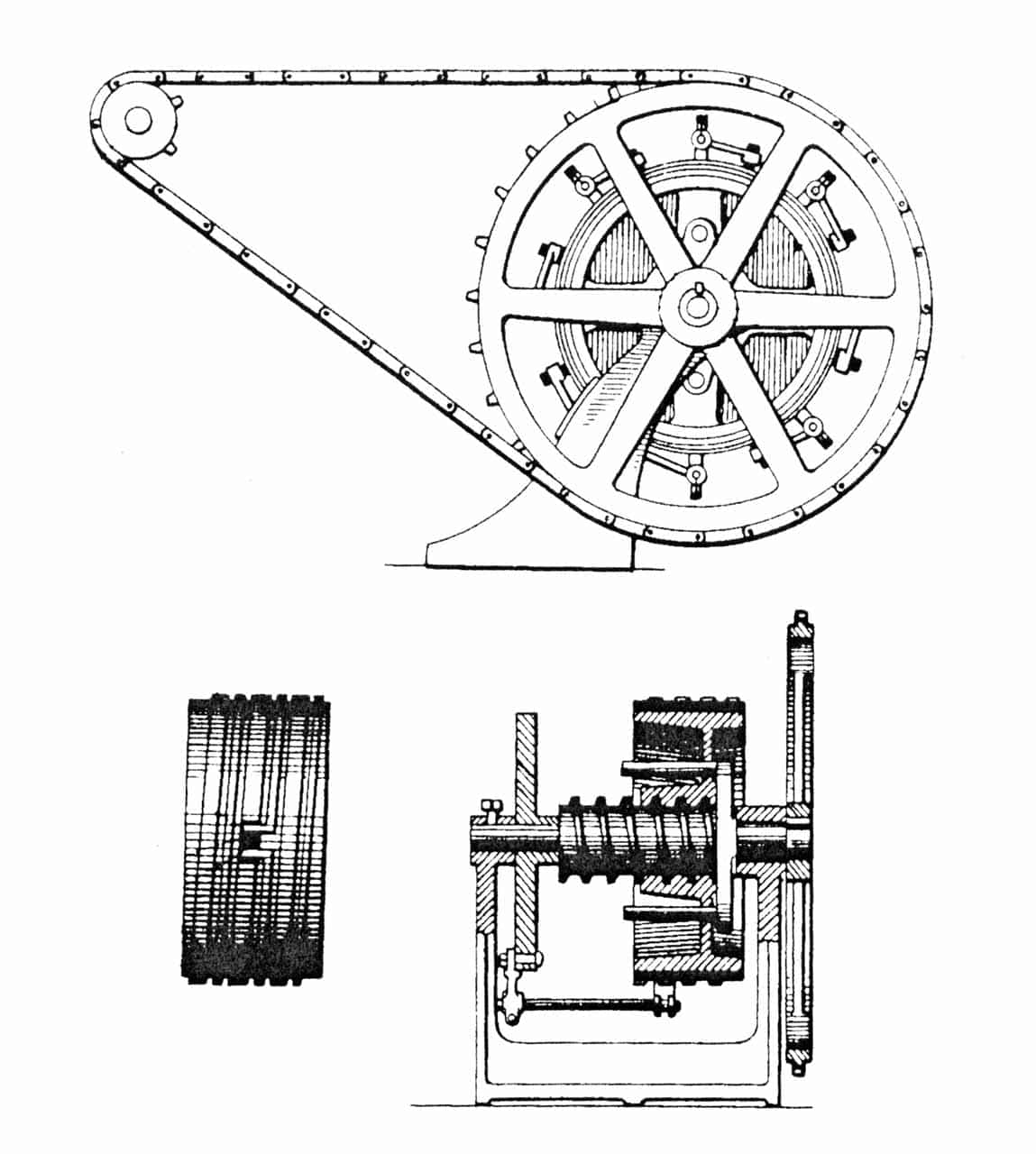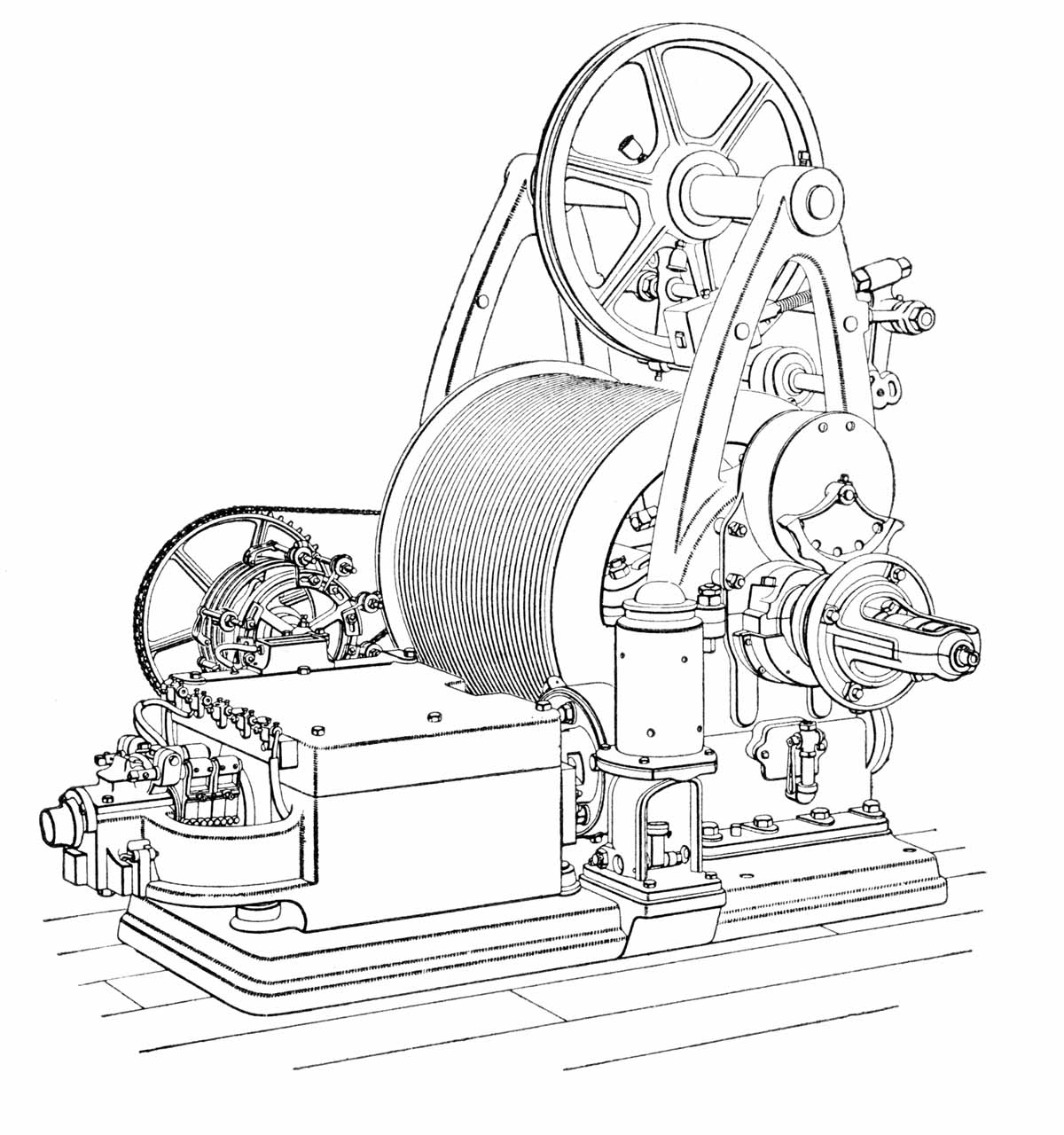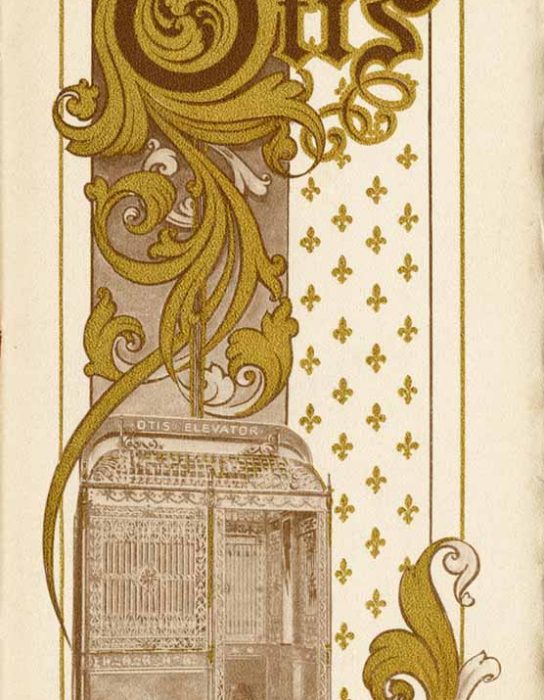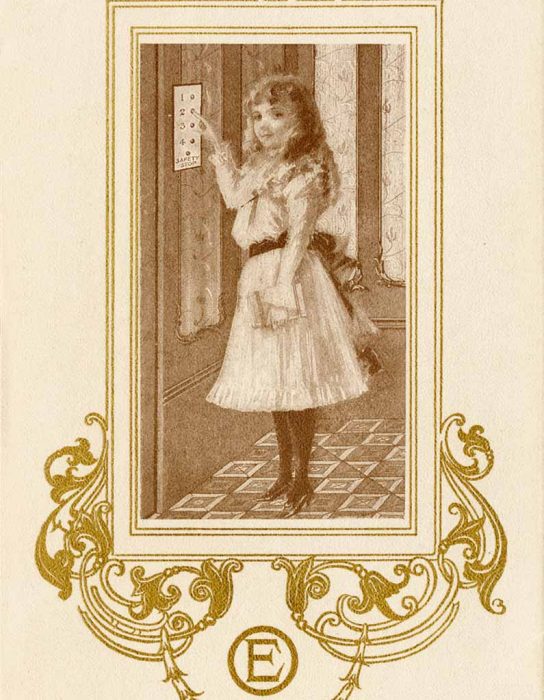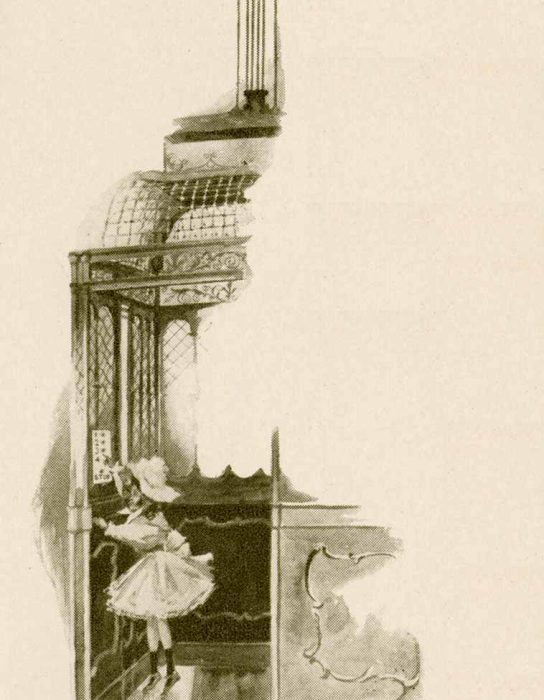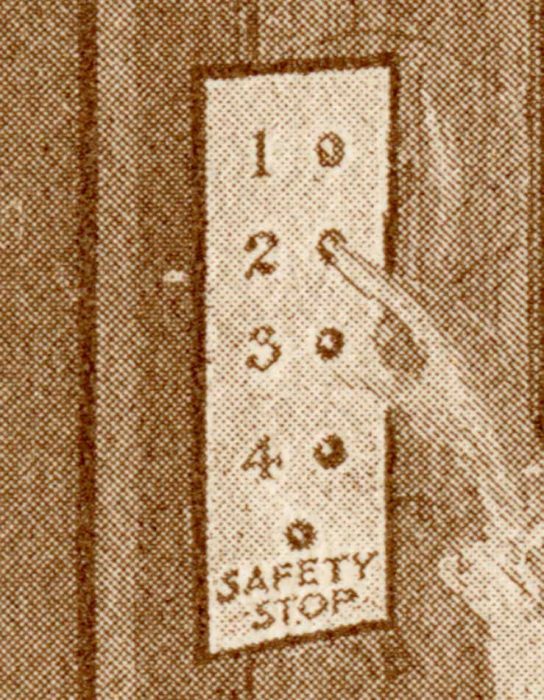The History of Operatorless Elevators: John D. Ihlder
Jun 2, 2023

Ihlder’s contribution to the electric elevator merits special recognition.
The second phase of the history of the operatorless elevator (1895-1900) focused on the continued refinement of pushbutton systems and the invention of a floor controller designed to ensure the elevator’s automatic operation. A key figure in the development of these systems was Otis engineer John D. Ihlder (1848-1920). Ihlder’s contributions occurred during what might be termed his second career. He was born in Vegesack, Bremen, Germany, in 1848. He attended public and “navigation” school in Bremerhaven, which was followed by a year of service in the German navy.[1] Ihlder then began a career aboard the Columbus, a ship that “was employed chiefly in the transportation of petroleum from the United States to Europe, but also carried passengers.”[2] He advanced to the rank of captain and served in that role until 1882, when he retired from his nautical career. Ihlder had immigrated to the U.S. in 1878 and lived in Chicago for several years. In 1885, he matriculated to Cornell University where he pursued a degree in mechanical engineering with an emphasis in electrical engineering. He completed his studies in two years and graduated with a B.S. in 1887. He began his engineering career with the Eickemeyer Electric Co. in Yonkers, NY. This was followed by brief stints with Osterheld & Eickemeyer (Yonkers) and the Eickemeyer-Field Manufacturing Co. (Yonkers). In 1894, he joined the Otis Electric Co. (Yonkers), which had been established as a subsidiary of Otis in July 1892 to manufacture electric motors.
Ihlder had, in fact, pursued work associated with electric elevators prior to joining Otis. Rudolf Eickemeyer (1831-1895) designed and built the electric motors used in Otis’ first electric elevator system, which was introduced in 1890. It is reasonable to assume that Ihlder was involved in this work. The patent record also reveals that he played a role in the refinement of this inaugural elevator system, as well as in the design of the second-generation Otis machine, introduced in 1893. In December 1897, Ihlder filed three patent applications, one of which included key aspects of what became Otis’ third generation electric elevator system, which was designed for fully automatic operation:
For unknown reasons, the U.S. Patent Office rejected Ihlder’s application that concerned a two-button system. However, the parallel — and successful — patent application filed in England included the text of all three American patents, which allows a review of the two-button patent text.[3]
| Patent | Application Date |
| Electric Operation of Elevators by Single Button-Push System | December 6, 1897 |
| Electric Operation of Elevators by Two-Button Push Systems | December 14, 1897 |
| Electric Operation of Elevators by Three-Button Push Systems | December 16, 1897 |
The patents offered a concise summary of the state-of-the-art pushbutton control systems. The designs for two- and three-button systems followed paradigms established by previous inventors.[4] The two-button system required the operator to maintain a constant pressure on the button to sustain the car’s movement. When the button was released, the car stopped. The three-button system included start and stop buttons in the car and hall-call buttons. Neither of these systems included a means by which the car would automatically stop at a designated landing. Ihlder’s one-button system featured a car panel with designated floor buttons, and a hall call button used to summon the car:
“An ordinary pressure of a few seconds duration is all that is required to call the elevator to the desired floor, regardless of its position … Further, means are provided whereby the elevator can be operated from the car by simply pressing any button, and means are also provided whereby if the operator changes his mind and desires to stop at some intermediate floor or at any other position he can instantly do so. Safety devices are also used in connection with the system, whereby if any door of the well or the door of the elevator-cage is opened, the circuit is broken and the elevator cannot be moved until the doors are properly closed.”[5]
He also provided a device, which he called a “floor controller,” designed to ensure that the car would automatically stop at a designated landing.[5] Ihlder was the first to use this term in reference to this type of mechanism. The controller was described as:
“a cylinder or drum, on the face of which are arranged two spiral contacts, or what is, in effect, a single spiral with an electrical break between the two portions thereof. This drum may be rotated continuously in a single plane; but in order to give sufficient length to the contacts they are preferably arranged spirally on a smaller drum … and the drum is caused to move longitudinally as well as rotatively.”[5]
A 1902 description of the controller confirms that it was built following the 1897 design:
“A spiral contact band is mounted on an insulating drum, which is moved sidewise by a coarse screw as it revolves, so that the contacts always press against the band. The various contacts connect to the push buttons. The controller is used to … stop the car when it reaches its destination … The strip is arranged in spiral form on the drum simply to avoid the use of a drum of large diameter.”[6]
The controller was connected to the motor via a chain that ran between a small sprocket-wheel mounted on the motor shaft and a large sprocket-wheel mounted on the controller. Thus, it could be calibrated to respond to the number of revolutions required to travel between landings. Ihlder’s patent included an elevation, section and detail drawing of the floor controller (Figure 1). Its application to an Otis electric elevator may be seen in a 1901 engraving and a 1902 drawing (Figures 2 and 3).
Ildler’s floor controller was also linked to a new feature designed to assist in the elevator’s automatic operation:
“In the operation of fast-speed elevators or in cases where the load varies or in any other case where on account of the varying momentum of the masses in motion it is difficult to stop the car automatically at the exact position desired … I have found it desirable to provide some means to automatically reduce the speed of the car before it reaches the floor or point at which the automatic stop is to be made, and in this way the speed is reduced to such an extent from its normal speed that the car can finally be brought to rest at practically the exact position under all conditions of load or speed. This slow speed before the stop is arranged to be produced automatically and may be accomplished in various ways, as by a circuit controlling an additional shunt field-winding, a short-circuiting resistance in the shunt field making a parallel circuit to the armature, or other equivalent means, and in the present instance I have shown an additional shunt field-winding automatically controlled by the floor controller.”[5]
This design feature, which automatically slowed the car’s speed as it approached a landing, would become a critical component of automatic leveling systems developed in the early 1920s.
Ihlder received nine additional patents associated with his 1897 design, many of which contributed to the commercial success of this generation of Otis’ electric elevator, which was marketed from 1898 well into the first decade of the 20th century. A schematic wiring diagram published in 1902 reveals the scope of development that had occurred between 1893 and 1898. Highlighted features included the floor controller, limit switches, a safety button and shaft door and car gate contacts (Figure 4). The engraving of the elevator engine in Figure 2 was one of several illustrations featured in a 1901 brochure advertising Otis’ electric residential elevator (Figure 5). The brochure’s text highlighted the simplicity of the elevator’s operation:
“Our electric elevators are particularly well adapted for private residence service, as with our improved push-button system of control a regular attendant is unnecessary, this device being so simple a child can operate the car with entire safety.”[7]
Illustrations included a drawing of a young girl standing on tiptoe in order to push a car button, and a slightly older (and taller) girl pushing a button (Figures 6 and 7). A close examination of the latter drawing reveals the presence of the “stop” button on the car panel (Figure 8). This allowed the user to stop the car at any time and, if needed, change its destination and/or direction (pushing the stop-button reset the car panel).
Otis’ tireless promotion of its automatic residential elevator not only caught the attention of potential buyers, but also attracted the attention of the Franklin Institute. Founded in Philadelphia in 1824, the Institute promoted the development and professionalization of engineering and science in the U.S. These efforts included establishing a series of awards intended to recognize significant inventions and technological accomplishments. In early 1902, a Sub-Committee of the Committee on Science and the Arts began investigating Otis’ residential elevator. Their report, completed on June 1, summarized the challenge faced by the designers:
“When elevators are to be used in public buildings and where the traffic is of such amount as to warrant the placing of an attendant in charge of each machine, the question is comparatively a simple one, as a great deal can be left to the discretion of the operator and many operations can be performed or omitted at his judgment. In the case of a machine, however, intended to be operated by persons absolutely unskilled in the art, and with no one near at hand to rectify mistakes, it becomes a serious and complicated problem to provide means to meet and fill the requirements of the many different combinations that may arise.”[8]
The Otis design team included John D. Ihlder, Norton P. Otis, Rudolf C. Smith and August Sundt. The review committee noted that they had interviewed: “Mr. Ihlder, of the Otis Co., the inventor of many of the devices covered by the later patents, and received from him a full explanation of the working of the apparatus.”
In addition to their interview, the committee examined a machine in operation in Philadelphia, where they “carefully (went) over the apparatus itself and tested the operation of the car in all combinations which they could think of as likely to occur in practice.”[8]
The committee’s conclusion was as follows:
“For the ingenuity displayed in meeting the various combinations of an exacting service, and for the thorough and mechanical manner in which this apparatus has been developed so as to place it in the hands of the public upon a commercial basis, the Franklin Institute recommends the award of the John Scott Legacy Medal and Premium to the inventors.”[8]
The committee’s recommendation was adopted on October 1, 1902, and the John Scott Legacy Medal was awarded to Ihlder, Otis, Smith and Sundt the following year. While, as is almost always the case, complex inventions such as Otis’ automatic electric elevator are the result of a team effort, in this particular instance the contributions of a single individual — John D. Ihlder — received (and deserved) special recognition.
References
[1] Biographical History of Westchester County, New York, V.II, Chicago: Lewis Publishing Company (1899).
[2] Peter-Michael Pawlik, Von der Weser in die Welt; Die Geschichte der Segelschiffe von Weser und Lesum und ihrer Bauwerften 1770 bis 1893, Hamburg: Kabel (1993).
[3] Improvements in and Connected with Apparatus for Controlling the Motion of Elevators or Lifts, British Patent No. 1,883 (May 7, 1898).
[4] See “The History of Operatorless Elevators: Push Button Control 1886-1895,” Elevator World (April 2023).
[5] John D. Ihlder, Electric Operation of Elevators by Single Button-Push System, US Patent No. 710,914 (October 7, 1902).
[6] “Elevators,” Steam Engineering: Pumps, Elevators and Steam Heating, International Correspondence Schools (1902).
[7] Electric Elevators for Residences, Otis Elevator Co. (January 1902).
[8] “The Otis Elevator Company’s Electric Elevator for Private Residences,” Journal of the Franklin Institute (September 1903).
Get more of Elevator World. Sign up for our free e-newsletter.
